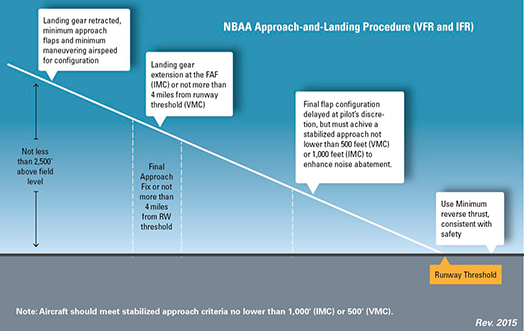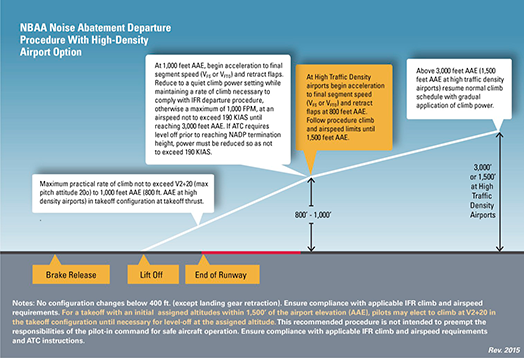San Francisco Bay Oakland Intl Airport
Oakland, California, United States
Noise Abatement Information - Last update 11/04/2024
Overview
The Port of Oakland, operator of the San Francisco Bay Oakland International Airport, and the citizens of the East Bay communities welcome you to our area. In order to be a good neighbor, the Airport and the community request that you follow these recommended noise abatement procedures. Minimizing aircraft noise near residential areas and operating a safe and efficient air transportation system is a worldwide challenge. Courteous and responsible pilots make the difference by avoiding unnecessary residential over-flights and by flying as quietly as safety permits. Please help us maintain a good neighbor relationship with the surrounding communities by following the recommended noise management procedures, subject to weather, equipment and pilot capabilities.
Safety always supersedes noise abatement procedures. Always comply with air traffic control instructions and other safety considerations caused by weather or emergencies.
Images / Diagrams
Runways: 10L, 10R, 28L, 28R & 33 | All Aircraft Categories | Departure Only
North Field Noise Abatement Procedures

Runways: 28L, 28R & 33 | Aircraft Categories: A, B & C
North Field Preferred VFR Departures

Runways: 10L, 10R, 28L & 28R | Aircraft Categories: A, B & C
North Field Preferred Nighttime Departures

Runway 28L | Aircraft Categories: A, B & HELI
Preferred Touch & Go Pattern

Arrivals
Runways: 10L & 10R | Aircraft Categories: B, C, D & E | Arrival Only
For noise abatement, the Port of Oakland recommends ALL JETS and other aircraft listed below, to land on Runway 12 when approaching from the North, unless otherwise directed by ATC.
Runways: 10L, 10R, 15, 28L, 28R & 33 | All Aircraft Categories | Arrival Only
Avoid flying over residential areas and hotels.
Runways: 10L & 10R | Aircraft Categories: B, C, D & E | Arrival Only
The following aircraft should not land on Runways 10L/R, except during emergencies. Runway 12/30 should be used.
• Turbojet and turbofan powered aircraft.
• Turboprops over 17,000 pounds.
• Four-engine reciprocating powered aircraft.
• Surplus military aircraft over 12,500 pounds
Runway 15 | All Aircraft Categories | Arrival Only
No straight-in landings unless required by safety or wind conditions.
Departures
Runways: 28L & 28R | Aircraft Categories: B, C, D & E | Departure Only
The following aircraft should not depart Runways 28 L/R. Runway 12/30 should be used:
• Turbojet and turbofan powered aircraft.
• Turboprops over 17,000 pounds.
• Four-engine reciprocating powered aircraft.
• Surplus military aircraft over 12,500 pounds
Runways: 28L & 28R | Aircraft Categories: A, B, C & HELI | Departure Only
SALAD ONE Departure Procedure was published in August 2000. Please consult ATC instructions. Note: Do not use the OAK 313 or 310 degree heading departure.
Runways: 10L & 10R | All Aircraft Categories | Departure Only
VFR and IFR departures should use 180 degree departure headings when able for E/SE-bound departures or use right turns over the airport for N/NE-bound departures.
No left turn departures
Runway 10L | All Aircraft Categories | Departure Only
No straight out departures
Runways: 28L & 28R | Aircraft Categories: A, B & C | Departure Only
Make right crosswind turn over San Leandro Bay until reaching I-880 (Nimitz Freeway) and continue per ATC instructions.
No straight out departures
Runway 28R | Aircraft Categories: A, B & C | Departure Only
VFR departures should include a right crosswind or additional downwind segment avoiding Bay Farm Island and the main island of Alameda.
Runway 33 | All Aircraft Categories | Departure Only
Make right northerly turn over San Leandro Bay until reaching I-880 Freeway and continue per ATC instructions.
No straight out or left crosswind/downwind departures
Runways: 10L, 10R, 15, 28L, 28R & 33 | Aircraft Categories: A, B & C | Departure Only
Use only full runway-length departures from the chosen North Field runway.
All Runways | Aircraft Category HELI | Departure Only
Daytime/Nighttime
Fly over freeway and water as much as possible to avoid flying over hotels and residential areas.
Preferential Runways
Aircraft Categories: B, C, D & E | Departure Only
The following aircraft should not depart Runways 28 L/R. Runway 12/30 should be used:
• Turbojet and turbofan powered aircraft.
• Turboprops over 17,000 pounds.
• Four-engine reciprocating powered aircraft.
• Surplus military aircraft over 12,500 pounds
All aircraft over 75,000 pounds are directed to use Runways 12/30
All Aircraft Categories | Arrival Only
Nighttime – (2200 local to 0700 local)
Runway 28L
Pattern Altitudes
ALL VALUES ARE MSL (FEET)
Runways: 10L, 15, 28L & 33 | Aircraft Categories: A, B & HELI
Fly standard traffic pattern.
Fly Runway 10R/28L at approximately 600 feet AGL. For safety, beware of traffic on Runway 12/30.
Intersection Takeoffs
Runways: 10L, 10R, 15, 28L, 28R & 33 | Aircraft Categories: A, B & C
Use only full runway-length departures from the chosen North Field runway.
Engine Runup
Aircraft operator must contact the Manager On Duty (MOD) at 510-563-3361 to request authorization for an engine maintenance run-up prior to performing this activity. Airport Operations Directive in effect.
Flight Training
Runway 28L is the preferred touch-and-go runway; Fly 600 feet AGL traffic pattern and, for safety, beware of traffic on Runway 30.
Community Groups/Info
Oakland Airport/Community Noise Management Forum
The Noise Forum was created to address community noise concerns and make recommendations to the Port of Oakland Executive Director on noise related issues at the Airport. Forum representatives include one elected official and one citizen from six neighboring cities, Alameda County and the Port Director of Aviation. The Noise Forum facilitates cooperation between the Airport and local communities. Public attendance is welcomed at the Forum’s quarterly meetings, which are held quarterly, on the third Wednesday of the month, at 6:30 p.m., at the Port of Oakland Board Room, 530 Water Street, 2nd Floor, in Oakland Jack London Square.
The Noise Forum serves as an umbrella organization for two technical subcommittees or working groups that also meet separately on a quarterly basis.
North Field Flight Route/Pattern Research Group
The North Field Group was formed to address aircraft noise issues associated with the operation of the North Field or general aviation facility of San Francisco Bay Oakland International Airport.
The South Field Research Group was formed to address aircraft noise issues associated with the operation of the South Field, or commercial airline and air cargo facility of San Francisco Bay Oakland International Airport.
Flight Track Monitoring
The airport operates an Aircraft Noise and Operations Monitoring System (ANOMS) to monitor compliance with voluntary noise abatement procedures and to respond to community and stakeholder concerns or request for information.
Noise Monitoring
The airport maintains 15 permanent noise monitors located throughout local communities and an additional one located within the airport at the Ground Runup Enclosure (GRE).
Airport Contact Info
| Name: | Jesse Richardson, Airport Noise Abatement and Environmental Affairs Supervisor |
|---|---|
| Phone: | 510-563-3349 |
| Noise Hotline: | 510-563-6463 |
| Email: | OAKNoiseProgram@PortOakland.com |
| Web Address: | https://flyquietoak.com/ |
| Noise Complaint Address: | https://flyquietoak.com/community/file-noise-complaint/ |
| Address: | San Francisco Bay Oakland International Airport One Airport Drive, Box 45 Oakland California 94621 |
NBAA Procedures
AOPA Noise Awareness Steps
Following are some general guidelines and techniques to minimize the noise impact produced by aircraft operating near the ground.
1. If practical, avoid noise-sensitive areas such as residential areas, open-air assemblies (e.g. sporting events and concerts), and national park areas. Make every effort to fly at or above 2,000 feet over the surface of such areas when overflight cannot be avoided.
2. Consider using a reduced power setting if flight must be low because of cloud cover or overlying controlled airspace or when approaching the airport of destination. Propellers generate more noise than engines; flying with the lowest practical rpm setting will reduce the aircraft's noise level substantially.
3. Perform stalls, spins, and other practice maneuvers over uninhabited terrain.
4. Many airports have established specific noise abatement procedures. Familiarize yourself and comply with these procedures.
5. To contain aircraft noise within airport boundaries, avoid performing engine runups at the ends of runways near housing developments. Instead, select a location for engine runup closer to the center of the field.
6. On takeoff, gain altitude as quickly as possible without compromising safety. Begin takeoffs at the start of a runway, not at an intersection.
7. Retract the landing gear either as soon as a landing straight ahead on the runway can no longer be accomplished or as soon as the aircraft achieves a positive rate of climb. If practical, maintain best-angle-of-climb airspeed until reaching 50 feet or an altitude that provides clearance from terrain or obstacles. Then accelerate to best-rate-of-climb airspeed. If consistent with safety, make the first power reduction at 500 feet.
8. Fly a tight landing pattern to keep noise as close to the airport as possible. Practice descent to the runway at low power settings and with as few power changes as possible.
9. If a VASI or other visual approach guidance system is available, use it. These devices will indicate a safe glidepath and allow a smooth, quiet descent to the runway.
10. If possible, do not adjust the propeller control for flat pitch on the downwind leg; instead, wait until short final. This practice not only provides a quieter approach, but also reduces stress on the engine and propeller governor.
11. Avoid low-level, high-power approaches, which not only create high noise impacts, but also limit options in the event of engine failure.
12. Flying between 11 p.m. and 7 a.m. should be avoided whenever possible. (Most aircraft noise complaints are registered by residents whose sleep has been disturbed by noisy, low-flying aircraft.)
Note: These recommendations are general in nature; some may not be advisable for every aircraft in every situation. No noise reduction procedure should be allowed to compromise safety.
Temporary Information (None)
None
Mandatory Restrictions (None)
None
Curfews (None)
None
Preferential Instrument Procedures (None)
None
Reverse Thrust (No Restrictions)
No restrictions
APU Use (No Restrictions)
No restrictions
Stage II (No Restrictions)
No restrictions
Stage III (No Restrictions)
No restrictions
Noise Ordinance (None)
None
Prior Permission (PPR) Operations (None)
None
Airport Maps
Airport Contact
| Name: | Jesse Richardson, Airport Noise Abatement and Environmental Affairs Supervisor |
|---|---|
| Phone: | 510-563-3349 |
| Noise: | 510-563-6463 |
| Address: |
San Francisco Bay Oakland International Airport One Airport Drive, Box 45 Oakland California 94621 |
Weather Data

Loading Most Current Data...
Airport Data
| Elevation: | 9 ft |
|---|---|
| City: | Oakland, California, United States |
| Sectional Chart: | San Francisco |
| Flight Service: | Oakland FSS |
| Control Tower: | Yes |
| Wind Indicator: | Yes |
| Fuel: | 100LLA |





